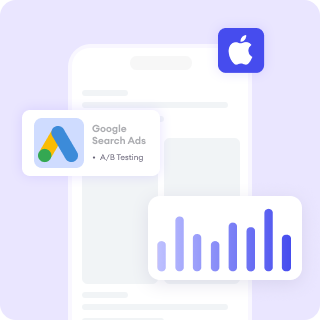With Mobile-First Indexing, Google primarily uses the mobile version of your website to determine its rankings. This means having a mobile-friendly site isn’t just a nice-to-have, it’s a must! If you want your site to rank well and provide a seamless experience for users, improving your mobile site is essential.
Here’s how to optimize your mobile website for Mobile-First Indexing.
Why is Mobile Optimization Important for Mobile-First Indexing?
More than half of global web traffic comes from mobile devices, and Google wants to deliver the best experience for these users. A mobile-friendly website ensures that your visitors can navigate easily, find information quickly, and enjoy a smooth browsing experience. If your site isn’t optimized for mobile, you risk lower rankings, higher bounce rates, and missed opportunities.
Steps to Improve Your Mobile Website
1. Use Responsive Web Design
Implement a design that dynamically adjusts the website's layout based on the device's screen size, and ensure text remains legible, images scale proportionally, and buttons are appropriately sized for touchscreens.
How:
- Use CSS media queries to define styles for different screen sizes (e.g., @media (max-width: 768px) for tablets).
- Use responsive frameworks like Bootstrap or Foundation to simplify grid-based layouts.
- Set images and other elements to use relative sizes (e.g., width: 100%) to ensure they scale properly.
2. Ensure Content Parity
Make sure to maintain consistent content across mobile and desktop versions. You should also include all vital text, images, and links to ensure search engine rankings are not affected. Avoid reducing content on mobile at the expense of usability.
How:
- Use tools like Google Search Console to compare content across mobile and desktop versions.
- Avoid hiding essential text or links on mobile. Use collapsible sections (e.g., accordions) if space is a concern.
- Test both versions for consistency with mobile-friendly testing tools like Google Mobile-Friendly Test.
3. Optimize Page Speed
Mobile users expect fast-loading sites, and slow pages increase bounce rates. Here's how to do it:
- Use tools like Google PageSpeed Insights or GTmetrix to identify issues.
- Compress files using tools like Gzip or Brotli for faster delivery.
- Minimize JavaScript and CSS files using a minifier (e.g., UglifyJS for JavaScript or CSSNano for CSS).
- Use lazy loading for images so they load only when the user scrolls to them.
4. Simplify Navigation
Use intuitive layouts, such as a hamburger menu (☰), for compact and user-friendly navigation and ensure buttons and menu options are large enough to tap easily without errors.
How:
- Use a hamburger menu for mobile navigation; frameworks like Material-UI or Bootstrap include prebuilt components.
- Prioritize key links and hide less important options under expandable menus.
- Test the navigation on real devices to ensure usability with tools like BrowserStack or Sauce Labs.
5. Use Mobile-Friendly Fonts and Images
Opt for clean, sans-serif fonts with adequate spacing for readability. Compress images with tools like TinyPNG or JPEGmini to maintain quality while reducing file size, improving load times.
How:
- Use fonts that are easy to read on small screens, like Roboto or Arial, and set font sizes to a minimum of 16px.
- Compress images with tools like TinyPNG, ImageOptim, or built-in plugins for your CMS (e.g., Smush for WordPress).
- Use SVG images for graphics to ensure scalability without pixelation.
6. Enable Mobile-Friendly Pop-ups
Avoid full-screen or intrusive pop-ups that frustrate users. If necessary, design smaller, dismissible pop-ups that do not obscure essential content or functionality.
How:
- Make sure pop-ups are easy to close by providing a clear “X” or close button.
- Use Google Tag Manager to implement exit-intent or scroll-triggered pop-ups instead of immediate ones.
7. Test Tap Targets
Ensure interactive elements like buttons and links are large enough to tap comfortably with a thumb. Maintain adequate spacing between tap targets to reduce accidental clicks.
How:
- Follow Google’s guidelines: buttons should be at least 48x48 pixels with 8px of padding between them.
- Use Figma or Sketch to design and test touch-friendly components before development.
- Conduct real-device testing to ensure targets are easily tappable.
8. Optimize for Local Searches
Include local information such as your business address, phone number, and operating hours. Ensure your Google My Business profile is accurate and up to date for better visibility in local searches.
How:
- Include your location details prominently on your site (e.g., in the footer or contact page).
- Add schema markup like LocalBusiness schema to help search engines understand your location details.
- Regularly update your Google My Business profile with current information and photos.
9. Leverage AMP (Accelerated Mobile Pages)
Use AMP to deliver simplified, lightweight HTML versions of your pages, which load faster on mobile devices. Although AMP is optional for Mobile-First Indexing, its speed benefits improve the user experience.
How:
- Use AMP HTML, which strips down regular HTML to a lighter version optimized for speed.
- Follow AMP documentation to create AMP-compatible pages (start at AMP - a web component framework to easily create user-first web experiences - amp.dev).
- Test AMP pages with the AMP Validator tool to ensure compliance.
10. Ensure Strong Internal Linking
Regularly check that all internal links function correctly and lead to relevant pages. Avoid broken links, as they negatively impact user experience and search engine rankings
How:
- Use tools like Screaming Frog SEO Spider to identify broken links or errors in internal linking.
- Structure links, such as breadcrumb navigation or contextual links, to help users find relevant content.
- Regularly update and audit internal links to keep them accurate and functional.
Bottom Lines
Improving your mobile website for Mobile-First Indexing is about more than just ranking higher on Google, it’s about creating a better experience for your users. By focusing on speed, navigation, and content parity, you can ensure that your site meets Google’s requirements and satisfies your audience.











